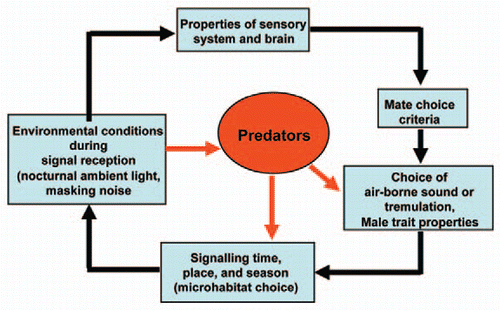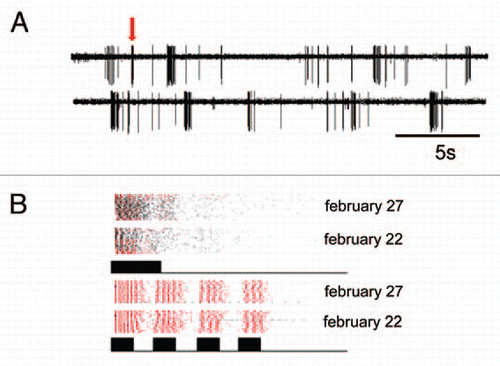Figures & data
Figure 1 The “Sensory Drive Model” (modified from ref. Citation10 and Citation11) adapted for D. gigliotosi using air-borne sound and tremulation for communication. Sensory systems, signals, signaling behavior, predator avoidance, signal modes and habitat choice are all evolutionary coupled. As a shift in one of these traits would have significant consequences for the other traits, they should also coevolve in predictable directions.

Figure 2 (A) Recording of single cell activity in the tropical rainforest, made at about 45 minutes after sunset, a time when the background noise level had increased from 40 dB SPL to 65 dB SPL. Note the bursting activity of this auditory cell in response to the background, but only one of the bursts (arrow) was elicited by a short, 20 ms stimulus. (B) Clusters of sensory bursts from two recordings in the natural habitat (February 22 and 27, 2004). Bursts elicited by artificial stimuli (either a simple, 20 ms stimulus or series of 4 times 10 ms pulses) are plotted red, bursts associated with noise are plotted in black. Note the similarity of bursts in the two preparations in different nights, and that bursts in response to the simple stimulus clustered together with bursts from noise.
